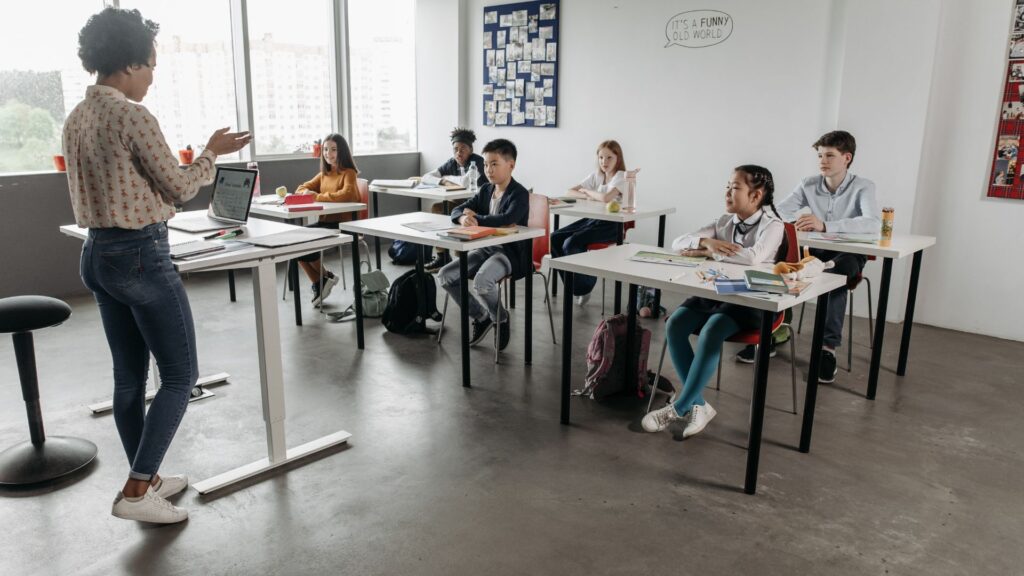Microschools Are A Growing Trend, But What Are They?
Microschools are one of the most popular education alternatives to public school today, here is everything you need to know about them.

Many Americans may not have heard the term microschool before this year, but now, the term is popping up everywhere you look. This school alternative is gaining traction with families all across the nation, but surprisingly, microschools are not a new concept. As trust in public education options continues to wane, microschools have become a growing trend. Here is everything you need to know about them.
The History
While seemingly a new fad, microschools have likely been existence far before public schools were even a thought. Think back to the olden times of one-room school houses prevalent in the United States during the 19th and the first half of the 20th century. These mirrored microschools. The modern-day versions are believed to have originated in the United Kingdom by groups of parents hiring full-time tutors to run a class. NPR claims that Cushla Barry coined the term in 2010.
What Are Microschools?
Microschools are often touted as a mixture of private school and homeschool – and even sometimes learning pods. They tend to operate out of a single classroom, and generally hold about 10-15 students, at most. Michroschools are very similar to the popular pandemic learning pods that erupted during the onset of the COVID pandemic. However, microschools differ from homeschools and learning pods, as they are required to be a unique entity and are typically required under law to be registered as an official school along with as a for-profit business.
It is hard to characterize what a microschool is as a whole, as they can differ school by school. In general, however, they operate in a student-centered manner, with multiple age groups working together under one roof. Usually, with just one teacher, who can be either a parent or professional educator, these authoritative figures act more as a guide than a traditional lecturer.
As for the size of the operation, microschools vary greatly. Some are quite small and independent, with only one classroom as the base of operation. Others have branched out to multiple locations, operating under a larger network. Acton Academy and Prenda are perfect examples of this. Acton offers more than 250 microschools across 25 different countries. Prenda, which started small in 2019, now operates more than 100 tuition-free schools across six states.
What A Microschool Class Day Looks Like
The typical day in a microschool class tends to look much different than a traditional public school day. Just like with many homeschools, microschools don’t usually follow a structured schedule. Some parts of the day are spent using online curriculum platforms like Zearn or iReady. In other parts of the day, students spend time working together to collaborate on school projects.

Core classes aren’t the only focus in microschools. The majority of them also shell out time for electives like music, art, physical education, and much more. For some, families and students are allowed to choose which electives they wish to participate in. In fact, microschool electives often offer students a wider variety. At Prenda, students can spend this time learning a new language of their choosing, coding, and much more.
Why Are They Growing In Popularity?
There are many reasons as to why microschools have seen a sharp increase in popularity over the last decade or so. Many studies say that the pandemic exacerbated this, but it is important to know that they were a growing trend for families much before then. Still, the numbers are telling, and it’s evident that the mass exodus of families from the public school system led to this.
Many parents and students became fed up with how school districts handled schools during the pandemic. Some were unhappy that their children were kept out of school for such an extended amount of time. Even more, many of them were left at home with little to no instruction. With state, federal, and local governments stepping in and requiring young children to continue wearing masks, many looked to alternatives like microschools.
Lawmakers are now addressing that the interest in microschools is more than a growing fad. In Arizona, Gov. Doug Ducey pledged last year to allocate $3.5 million in state funds to develop 50 new microschools. West Virginia and Wisconsin are not only defining microschools through new legislation but also making it easier for parents to turn to them if they are unhappy with public education.
In New Hampshire, the Department of Education has partnered with Prenda to address learning loss caused by COVID disruptions. Known as the Recovering Bright Futures Program, the endeavor used COVID relief funds that will allow school districts to open microschools, led by Prenda. Calling the initiative learning pods, the mix aged group classes will only hold five to 10 students that will meet either somewhere in existing school buildings, or an agreed-upon community location.
Benefits Of Microschools
There are many benefits to placing children into microschools, as is evident with the massive amount of families turning to them. Above all else, they give children the benefit of moving at their own pace, which is nearly impossible in crowded public school classrooms. Also, as school safety and violence issues become an increasing, added threat across the nation, microschools prove to be safer solutions.

Flexibility is also a big benefit to microschools. Many of them operate seven days a week. This can give some families much-needed flexibility to schedule school time around busy lives. Also, since class sizes are so small, the student-to-teacher relationship can be bonded stronger, and teachers can better meet the needs of individual students.
Disadvantages Of Microschools
While the majority of supporters of microschools would say that the benefits far outway any disadvantages, it is important to note some of the downfalls to this style of education. To start, they are typically expensive. Since they operate with few students in a class, the educators tend to charge more money in order to keep up with wages and costs of operation.
Additionally, microschools lack some traditional school benefits. Students are given free transportation to and from school. Also, being enrolled in this type of education often means children miss out on opportunities to participate in school sports. It also can be overwhelming to some families when choosing the right curriculum that best fits their children’s needs.
For families looking to switch to microschools, it is vital to weigh in on every aspect before making a final decision. But to many, the benefits are proving fruitful. As trust in public schools continues to drop, microschools will likely keep popping up all across America.



